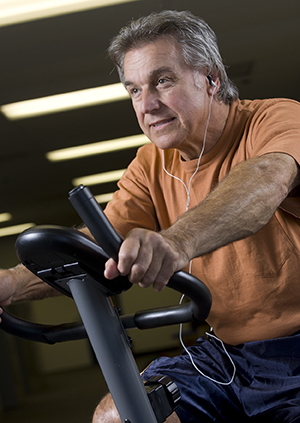Conditioning your body before knee replacement can help speed your recovery. Daily exercise helps strengthen muscles that support the knee joint. Aerobic activity (exercise that raises your heart rate) can improve fitness. It can also help you reach or maintain a healthy weight, which reduces stress on your knee. Before beginning any exercise program, talk with your healthcare provider.
Low-impact exercise
Try exercise that doesn’t put too much weight on your knee, such as riding a stationary bike or swimming. This helps build strength in your knee with little stress on the joint. Start slowly. Then try to do a little more each day. Stop any exercise that causes increasing pain. You can also ask your healthcare provider or physical therapist about ways to manage any discomfort that occurs during exercise.
Pool exercise
Exercising in a pool is a gentle, low-impact way to exercise muscles. It can improve balance and coordination. A physical therapist may work with you in a pool therapy program. You can also try pool walking on your own. Stand in waist- to chest-deep water with your arms out to the sides. Slowly walk forward. To keep from overdoing, ask your physical therapist or surgeon for guidelines on how long to exercise. They can also give you tips on pool safety.
Note
Speak with your healthcare provider if:
-
You have questions about the exercises
-
You have more pain or swelling in your knee after exercise


